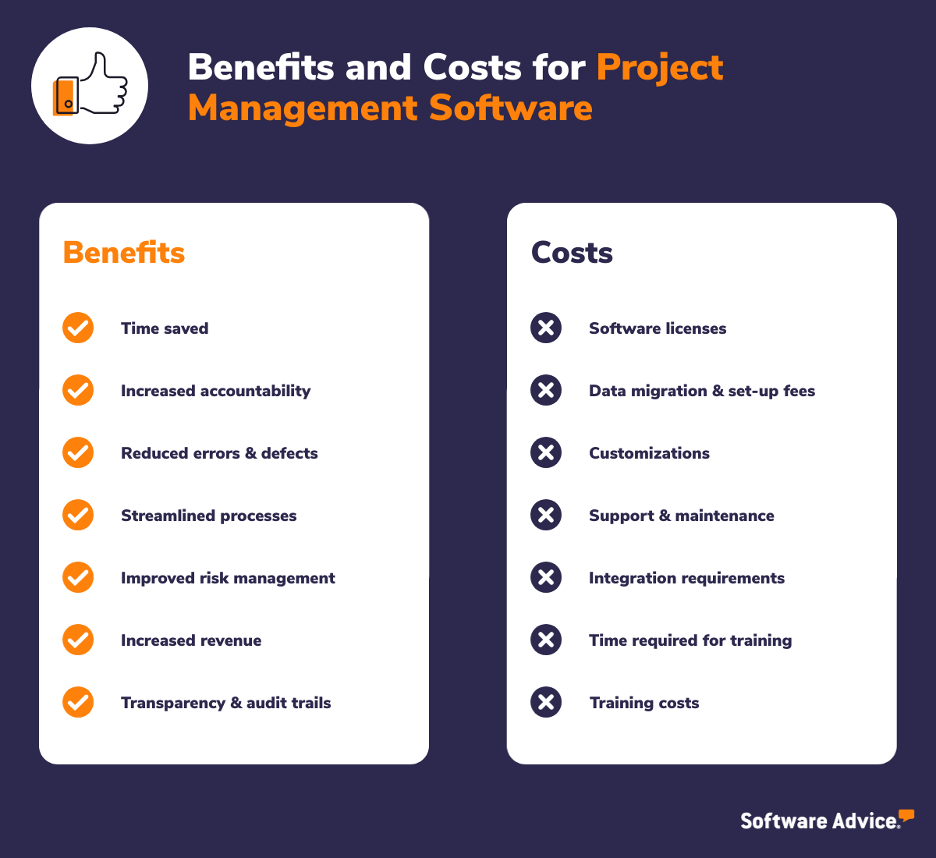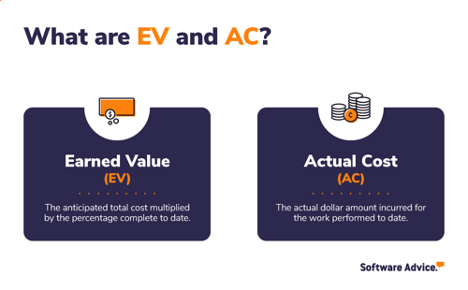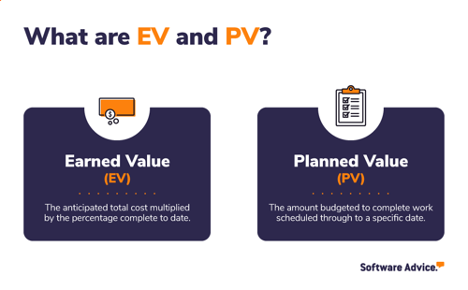4 Project Management KPIs Important For Performance Management
The ease with which you can gather data often results in small businesses tracking more than is essential, unfortunately leaving these same leaders struggling to define success criteria and make actionable decisions.
If you’re tracking everything, you’re not paying attention to anything.
Gartner supports this stance, stating that “more KPIs and metrics do not necessarily equate to better project management. A key performance indicator (KPI) should help you measure progress toward a particular goal. If they don’t, they’re not worth measuring and tracking.” (Full report available to Gartner clients.)
In this guide, we’ll highlight four project management KPIs and the calculation formulas that small and midsize businesses (SMBs) can use to evaluate and improve project performance. With this data, project managers can work to reduce risks such as an unexpected cost variance and inaccurate project cost estimations. We’ll also cover the software features that will best support your project management goals.
4 project management KPIs that can benefit small businesses
While the exact project management KPIs you track will be specific to your business goals, there are a few standard performance metrics that have proven value across a variety of different industries, e.g., IT, software development, marketing, and advertising.
What is a key performance indicator?
A KPI metric, or a project metric and/or a critical success factor, are specific data points used for measuring project success. Timeline and budget management are typically the key focus areas, including calculating budgeted cost (aka planned budget) against the actual budget costs being used.
Let’s get into these major project management KPIs.
1. Return on investment (ROI)
ROI helps you quantify project value and gauge an investment’s profitability.
Small businesses use this project KPI to compare the “return” expected from different types of projects. This information helps you decide which projects within your portfolio to prioritize in the short term as well as which types of initiatives to fund in the future.
Gartner defines the purpose of tracking ROI as the KPI that allows you to quantify the project value and understand the profitability of an investment. Here’s the recommended formula for calculating a project’s ROI:
Calculation: ROI = (Gain from investment minus the cost of investment) divided by cost of investment.
Factors to include when determining the “cost of investment” should be travel expenses, various department budgets, and employee salaries.
For example, here are some common benefits and costs associated with investing in a new project management software that will help you calculate the true ROI of your investment:

2. Cost performance index (CPI)
CPI shows you how efficiently you’re using the project budget.
You can use this value metric KPI to better understand the actual cost associated with a project. This enables you to forecast future performance and better allocate funds to projects.
Calculation: CPI = Earned Value / Actual Cost

If your result is a number greater than one, your project is on track to finish under the estimated cost. However, if your result is less than one, you’re headed for a project overrun.
3. Schedule performance index (SPI)
SPI is a project management metric you can use to gauge how well you’re executing on a project schedule.
Small businesses can use this project management KPI to understand the project team’s pace of work, which allows you to schedule projects more accurately in the future based on actual performance indicators.
This is especially helpful for businesses that are bidding on a project as they can say with confidence, “my project team works at this pace, and we can complete this amount of work in that time.”
Calculation: SPI = Earned Value / Planned Value

If your result is a number greater than one, your project delivery is on course to finish ahead of schedule. However, if your result is less than one, this indicates the project’s progress will put you behind schedule.
4. Resource capacity
It’s common to overestimate employee availability. But doing so can have disastrous effects on a project’s success as well as your portfolio management as a whole.
Functional managers and the project manager can use this project management metric to see how many full-time employees (FTEs) are available to work on projects. Then they can allocate resources to projects based on project priority.
Calculation: Resource capacity = (Number of people) (Availability)
To calculate resource capacity, multiply the number of people you have by the amount of time they have available to work on projects. Bear in mind that employees can realistically dedicate less than 50% of their work day to projects.
How to use project management KPIs to measure project performance
Start with a “S.M.A.R.T.” project management performance strategy, i.e., one that is specific, measurable, agreed upon, realistic, and time-based. This involves completing the following steps:

Be consistent. KPIs show trends over time, so it’s important to use a consistent set of metrics to measure performance across several similar projects (including a cancelled project if applicable).
Pro tip: In addition to being “measurable,” KPIs need to be “manageable.” So you should realistically be tracking only three to five performance indicators at any given time.
Any more than this, and you’ll be ineffective at driving organizational change and project improvement simply because there are too many factors and a lack of cohesive analysis.
The project management software features you need
Finally, look for the following capabilities as you evaluate tools to help you measure project management KPIs and monitor the health of your projects:
Map out a project’s critical path (often with Gantt charts), identify important milestones, pinpoint dependencies and constraints, and assign tasks to the team. Set baselines for scope, budget, and timeline. | |
Compare actuals to estimates (e.g., actual expenses versus planned budget and actual schedule versus planned timeline) and report status to stakeholders. Aggregate data, create a KPI dashboard, and run project status reports. | |
Manage both positive and negative occurrences that result from a project. Identify risks, assess their impact (perform both qualitative and quantitative analysis), respond, monitor, and control the impact. | |
Manage expenses, compare the actual cost to the budgeted cost, and track financial performance. Identify and course correct as needed with early detection and warning of potential overruns. This tool helps management forecast revenue and profitability. | |
Identify employee skill sets, track each employee’s workload and availability, and allocate them to projects accordingly. Forecast staffing needs and make proactive hiring and training decisions. |
Next steps for your project management software search
If you’d like to learn more about the project management solutions available to help small businesses, visit our project management buyers guide for more information. Or if you prefer a more personal touch, schedule a consultation with one of our software experts. The chat is free, and you’ll be sure to find the best software specifically for your business.